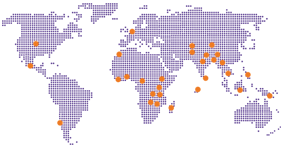Strengthening Maharashtra’s Climate Resilience through Sustainable Soil Management
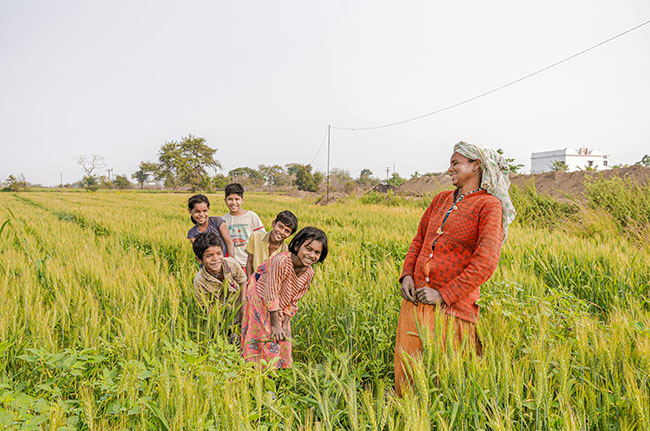
Situation/Challenge
Maharashtra faces rising climate risks, including droughts driven by unpredictable temperature and rainfall changes. Climate models predict some regions will see increased temperatures, while others may receive more monsoon rain-posing threats to the state’s already fragile and resource-poor ecosystems.
These changes are especially critical for districts, where higher temperatures could reduce crop yields and increase pest outbreaks, though some crops might benefit from higher CO₂ levels.
Maharashtra is working toward a net-zero emission target by 2070 and is identifying actions and funding options for climate adaptation. A key priority in the State Action Plan for Climate Change (SAPCC) is building resilient agriculture through crop diversification. While soil management is part of the SAPCC, it lacks strong integration into planning at the local level.
There is untapped potential for carbon storage in soils, but practical, policy-backed strategies are needed. Prosoil aims to bridge this gap by embedding soil health into Maharashtra’s climate response, starting with reinforcing the SAPCC.
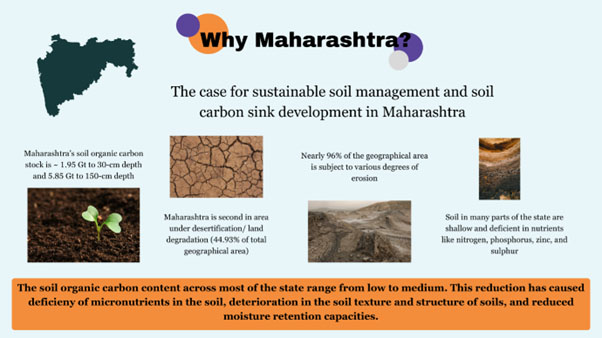
Our Solution / Process
Our approach focused on developing targeted strategies and actionable plans to embed Sustainable Soil Management (SSM), within Maharashtra’s broader climate change framework, ensuring effective on-ground implementation.
- We conducted a comprehensive review of existing state policies and programs across agriculture, land use, and climate sectors to identify entry points for integrating soil-centric mitigation and adaptation measures.
- This involved analyzing climate projections, assessing associated impacts and vulnerabilities, and outlining evidence-based actions to promote sustainable soil and land management.
- We identified several barriers hindering the adoption of sustainable soil management practices. These challenges vary across different land use categories-forest areas, private lands, common lands, and urban spaces. For instance:
- In forest area, degradation diminishes the potential for soil carbon sequestration.
- On private lands, fragmented landholdings and deeply rooted traditional practices hinder SSM implementation.
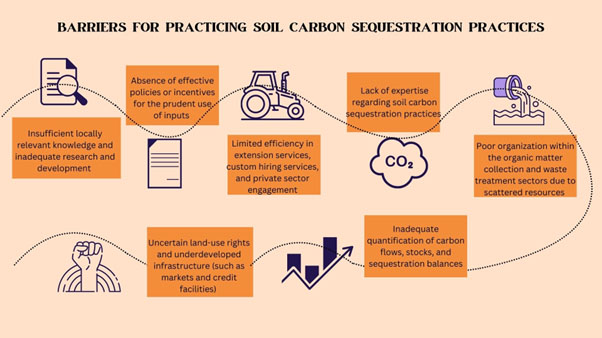
- Recommendations were made to embed these practices within the Maharashtra State Action Plan on Climate Change (SAPCC) and aligned initiatives.
- Insights from a study conducted in Aurangabad highlighted key vulnerabilities within the agriculture sector, which informed our approach.
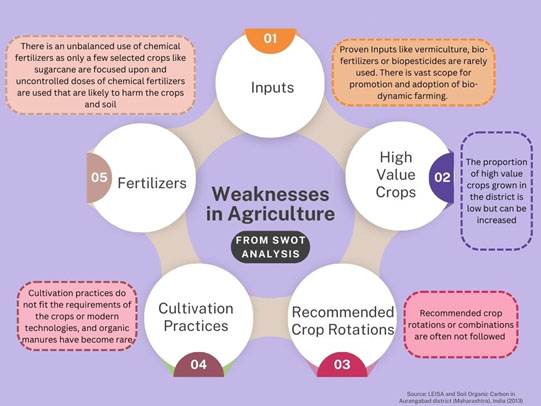
- We also analyzed programs led by Agriculture, Water Resources, Rural Development, and NABARD to suggest pathways for inter-departmental resource convergence and more streamlined implementation.
- Finally, we evaluated the climate mitigation potential of sustainable soil practices, especially in terms of carbon sequestration, to highlight the role of healthy soils as crucial carbon sinks for the state.
Outcome/Impact:
Sustainable Soil Management (SSM) and Soil Organic Carbon (SOC) enhancement offer Maharashtra a cost-effective way to combat greenhouse gas emissions, land degradation, and food insecurity. With around 1.02 GtC of SOC , the state holds 4.8% of India’s total SOC stock-but faces stark regional disparities.
SSM practices like agroforestry and no-till farming can significantly improve soil health, resilience, and livelihoods. However, integration into state planning remains limited due to several land-use-specific barriers – from urbanization pressures in forest areas to farmer hesitancy and resource gaps on private lands.
Despite MSAPCC acknowledging soil’s role in climate action, SOC-specific policies are under-prioritized . There’s a pressing need to strengthen institutional support, raise farmer awareness, and improve access to affordable technologies and compost.
Based on these insights, we laid out state-wide and sector-specific recommendations across agriculture, forestry, and urban development. These include:
- Tailored cropping systems, integrated land-water-soil management, and support for urban farming.
- Mangrove restoration, green belts, and applying carbon-rich bio-mined soils in forests.
- Circular organic waste systems led by Urban Local Bodies for rural compost use.
We also explored integration opportunities with national and state schemes like PKVY, RKVY, SHC, POCRA, JSY, and MVA, among others.
To implement this vision, financial resources are required and are expected to be mobilized through public funds, NABARD, and private sector financing.
Key Learnings:
- Enhancing SOC sequestration through SSM is a cost-effective strategy to mitigate greenhouse gases, combat land degradation, and improve food security.
- SOC-centered SSM practices can augment farm income, provide essential ecosystem services, and contribute to reaching SDGs, while improving soil structure and water retention.
- There is a pressing need for incentives that promote sustainable practices and judicious use of input while improving extension services and private sector engagement to facilitate the transition to SSM.
- While the MSAPCC acknowledges the importance of soil management, SOC related measures are often deprioritized across various policies and schemes. There is also a lack of dedicated policy/legislation at both the national and state level that focuses exclusively on soil health or carbon sequestration, despite several schemes impacting soil functions.



